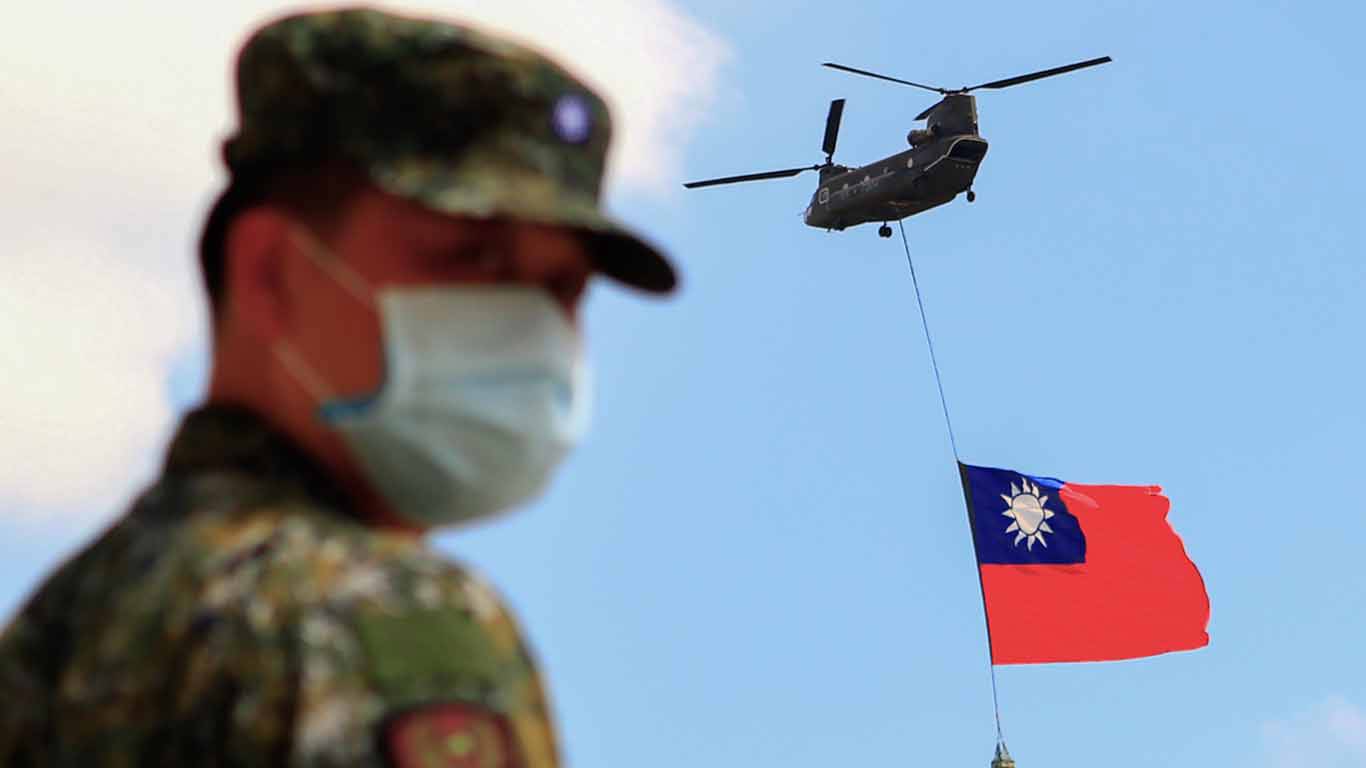BRAHMA CHELLANEY

NEW DELHI – China’s coercive expansionism may be taking its most dangerous turn yet. Recently, record-breaking numbers of Chinese military planes have entered Taiwan’s “air defense identification zone,” where the island’s authorities assert the right to demand that aircraft identify themselves. China’s muscle-flexing sends a clear message: it is serious about incorporating the island – and “reunifying” China – potentially by force.
Though the international community has been reluctant to challenge the Chinese claim that Taiwan has “always been” part of China, the claim is dubious, at best, and based on revisionist history. For most of its history, Taiwan was inhabited by non-Chinese peoples – Malayo-Polynesian tribes – and had no relationship with China. Geographically, Taiwan is closer to the Philippines than to the Chinese mainland.
It was not until the seventeenth century that significant numbers of Chinese began to migrate to Taiwan, encouraged by the island’s Dutch colonial rulers, who needed workers. Over the next 100 years, the ethnic Chinese population grew to outnumber Taiwanese natives, who were increasingly dispossessed, often violently. During this period, Taiwan came under the Qing Dynasty’s control. But it was not until 1887 that Taiwan was declared a province of China.
Barely eight years later, China ceded Taiwan to Japan in perpetuity, following its defeat in the Sino-Japanese War. Taiwan remained under Japanese colonial rule until 1945 – Japan officially renounced its sovereignty over it in the 1951 San Francisco Peace Treaty – and has been self-governing ever since. In other words, for the last 126 years, Taiwan has been outside China’s lawful control.
Today, Taiwan has all the attributes of a robust independent state, and most Taiwanese want it to stay that way. But Chinese President Xi Jinping appears eager to annex the island, as Mao Zedong’s regime did to Tibet in the early 1950s, in the name of “reunification.” A Chinese invasion of Taiwan would constitute the biggest threat to world peace in a generation.
Beyond compromising freedom of navigation in a crucial region, a Chinese takeover of Taiwan would upend the balance of power in the Indo-Pacific, not least by enabling China to break out of the “first island chain” that runs from the Japanese archipelago, through Taiwan, the Philippines, and on to Borneo, enclosing China’s coastal seas. It would also irreparably damage America’s reputation as a reliable ally. If the United States cannot (or will not) prevent Taiwan’s subjugation, why should anyone else count on US protection?
The risks are particularly acute for Japan, whose southernmost islands are adjacent to Taiwan. As then-Deputy Prime Minister Taro Aso observed in July, “Okinawa could be next.” Unable to rely on the Americans, Japan would likely remilitarize and even acquire nuclear weapons. Other US allies – such as South Korea, the Philippines, and Thailand – would likely be brought into China’s sphere of influence.
Yet the US does not seem particularly committed to preventing a Chinese takeover of Taiwan and the subsequent collapse of the half-century-old Asian security order. This is exactly what Xi is counting on. Successive US administrations have let him get away with countless expansionist maneuvers – from militarizing the South China Sea to demolishing Hong Kong’s autonomy – as well as cultural genocide in Xinjiang. Why should Taiwan be any different?
US President Joe Biden’s recent shift to a more conciliatory approach toward China has probably bolstered Xi’s confidence further. Xi currently may be focused on China’s 17-month-long military confrontation with India in the Himalayas, where Chinese territorial encroachments have triggered a massive buildup of forces along the inhospitable frontier. But, if some resolution can be found that reduces tensions in the Himalayas, it would free up Chinese capabilities to deal with the fallout of any Taiwan-related operation.
At that point, the only thing that would deter China from attempting to recolonize Taiwan would be the knowledge that it would incur high concrete – not just reputational – costs. Biden must therefore make it crystal clear to Xi that the US would mobilize its own military resources to defend Taiwan.
But will he? The US Strategic Framework for the Indo-Pacific – a policy document declassified by President Donald Trump’s administration before leaving office – recommends that America help Taiwan develop “asymmetric” capabilities against China. Such a strategy has recently been backed by some former American government and military officials. As retired Admiral James Stavridis puts it, just as a porcupine’s quills protect it from larger predators by making it difficult to digest, weapons like anti-ship and anti-aircraft missiles would turn any invasion of Taiwan into a bloody, protracted, and costly guerrilla campaign.
It is true that bolstering Taiwan’s defenses is crucial to avert Chinese amphibious and airborne operations. But even if the US and Taiwanese governments reached an agreement on an asymmetric strategy, it would take several years to build a “porcupine Taiwan” capable of choking the Chinese dragon. This process would include training a large civilian corps to mount sustained guerrilla attacks on invaders.
Until then, in keeping with the central paradox of deterrence, the only way to discourage aggression by a revisionist power is for the status quo power to threaten to go to war. That is how the US kept West Berlin – which had a political status even more precarious than Taiwan’s – free throughout the Cold War.
The worst stance the US could take would be to oppose a Chinese takeover of Taiwan without credibly signaling a genuine willingness to defend the island militarily. Such an approach could encourage Xi, who has grown accustomed to acting with impunity, to order a surprise invasion. With that, the Indo-Pacific order would be overturned, dealing a mortal blow to America’s global preeminence.
No comments:
Post a Comment